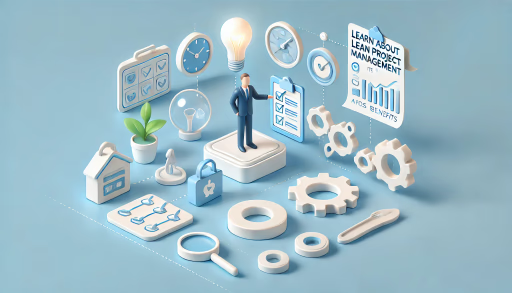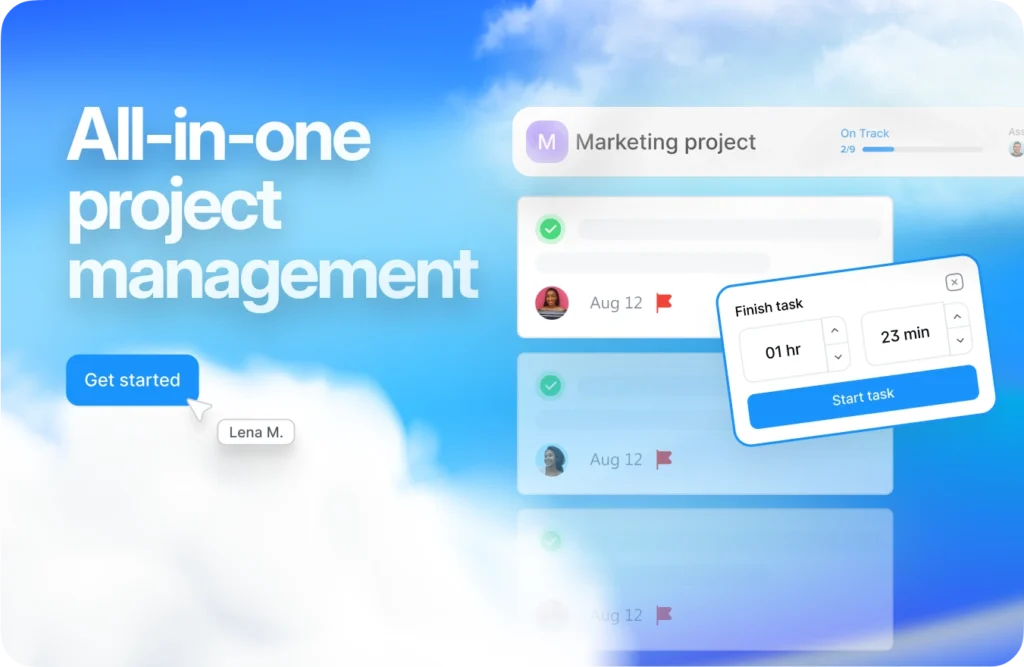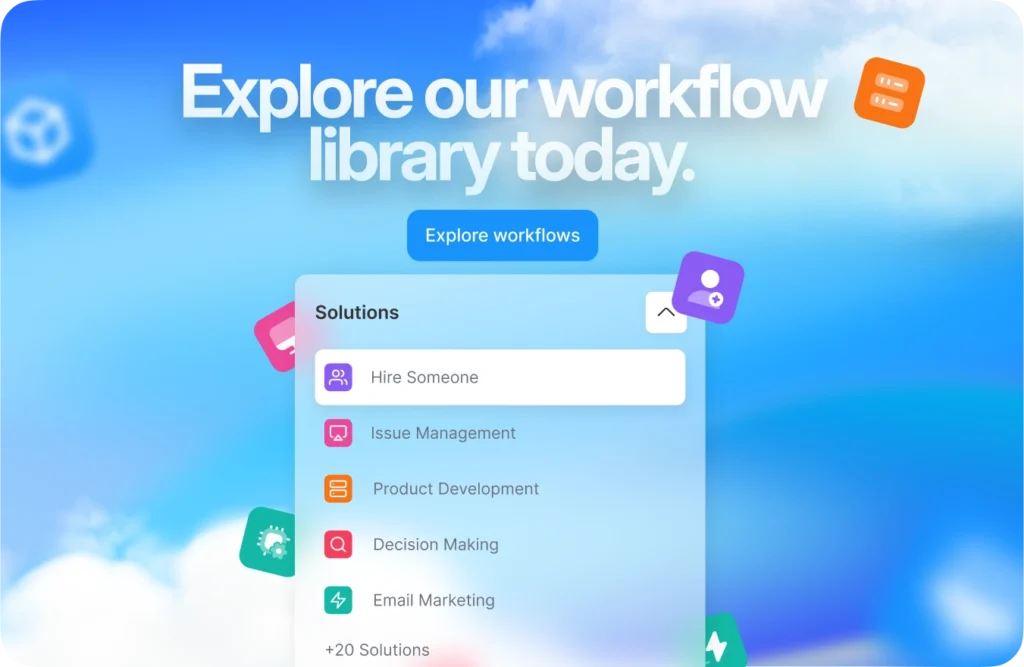Lean Project Management 101: Maximize Value, Minimize Waste

In today’s fast-paced business environment, efficient project management is not just a luxury; it’s a necessity. This is where Lean Project Management comes into play, revolutionizing how projects are executed by prioritizing value and minimizing waste. Whether you’re an entrepreneur, a team leader, or a project manager, understanding lean principles can significantly enhance your team’s productivity and outcomes—especially when clear task ownership and role clarity are established from the start.
This guide will walk you through everything you need to know about Lean Project Management, from its origins and principles to its practical benefits and challenges.
What Is Lean Methodology Project Management?
Lean Methodology Project Management focuses on maximizing value while minimizing waste during project execution. It is an approach inspired by lean manufacturing principles, emphasizing efficiency, collaboration, and continuous improvement.
Key concepts include:
- Value delivery: Ensuring that every task contributes directly to customer needs.
- Waste elimination: Identifying and removing inefficiencies, redundancies, and bottlenecks.
- Continuous improvement: Using feedback loops to refine processes iteratively.
Lean Project Management isn’t about working harder; it’s about working smarter by focusing on meaningful outcomes and eliminating the distractions that often derail efficient project execution.

The Five Core Principles of Lean Thinking
At the heart of Lean Project Management are five guiding principles that drive its effectiveness:
- Value: Focus on delivering what the customer truly values. This requires understanding their needs and tailoring the project to meet those expectations.
- Value Stream: Map out the entire process, identifying every step that contributes to the end goal. This visual representation helps in pinpointing inefficiencies.
- Flow: Ensure a smooth progression of tasks without interruptions or delays. Creating flow involves addressing bottlenecks and optimizing resource allocation.
- Pull: Adopt a “pull” system where tasks are initiated based on demand, preventing overproduction and resource wastage.
- Perfection: Strive for continuous improvement by refining processes and integrating feedback. Achieving perfection may not be realistic, but it serves as a guiding star.
These principles collectively empower teams to deliver projects with precision, speed, and customer satisfaction—something that becomes even more critical when managing multiple tasks across departments.
How Lean Project Management Works?
Implementing Lean Project Management involves using specific tools, methodologies, and practices.
Key Tools and Frameworks:
- Kanban boards: Visualize tasks and track progress in real time.
- Value Stream Mapping (VSM): Identify and remove non-value-adding steps.
- 5S Methodology: Organize and optimize the workspace for efficiency.
Roles and Responsibilities:
- Project Manager: Oversees the process, ensures alignment with lean principles.
- Team Members: Collaborate and execute tasks efficiently.
- Stakeholders: Provide feedback and ensure alignment with customer value.
Continuous Improvement Strategies:
- Conduct regular retrospectives to analyze project outcomes and apply those learnings just as you would in a structured Agile sprint review.
- Use metrics like lead time, cycle time, and throughput to measure success.
- Encourage a culture of open communication and experimentation.
Lean Project Management is dynamic, emphasizing adaptability and innovation to deliver the best results.
Key Benefits of Lean Project Management
Adopting lean principles can transform how projects are executed. Here are some of the most notable benefits:
1. Increased Efficiency: By eliminating waste, teams can focus on high-value tasks, reducing delays and improving productivity.
2. Cost Savings: Streamlining processes minimizes resource wastage, leading to significant cost reductions.
3. Enhanced Collaboration: Lean fosters a culture of transparency and teamwork, laying the foundation for better communication practices across remote and hybrid teams.
4. Improved Quality: Continuous feedback loops and iterative processes help in delivering higher-quality outcomes.
5. Customer Satisfaction: By prioritizing value, projects are more likely to meet or exceed customer expectations.
Whether it’s a small startup or a large corporation, lean principles offer universal advantages for project success.
Common Challenges in Lean Project Management
While Lean Project Management offers numerous benefits, it’s not without its challenges. Understanding these obstacles can help teams mitigate risks and implement lean practices more effectively.
1. Resistance to Change: Transitioning to a lean methodology often meets resistance, especially in organizations accustomed to traditional practices. Employees may be skeptical of new workflows, fearing increased workloads or loss of control.
How to Overcome:
- Provide clear communication about the benefits of lean.
- Involve team members in decision-making to gain buy-in.
- Offer training and support to ease the transition.
2. Misunderstanding the Methodology
Lean Project Management requires a deep understanding of its principles and tools. Misinterpreting these can lead to ineffective implementation and wasted effort.
How to Overcome:
- Invest in training for project managers and teams.
- Work with experienced consultants to guide initial adoption.
- Regularly revisit the core principles to ensure alignment.
3. Resource Allocation Issues
Lean projects depend on the optimal use of resources. Overcommitting resources to one area can create bottlenecks elsewhere, disrupting the flow.
How to Overcome:
- Use tools like Value Stream Mapping to identify and address bottlenecks.
- Monitor resource utilization and adjust allocations as needed.
- Encourage team flexibility to adapt to shifting demands.
By anticipating these challenges and planning proactively, organizations can avoid common pitfalls and fully leverage the potential of lean project management.
Role of Technology in Lean Project Management
Technology plays a pivotal role in enhancing the effectiveness of lean principles, enabling teams to streamline processes, improve communication, and optimize resource utilization.
1. Project Management Software: Tools like Jira, Trello, and Asana allow teams to visualize tasks, track progress, and identify bottlenecks. These platforms support lean practices by improving transparency and enabling collaboration.
2. Data Analytics: Analytics tools help in monitoring key performance indicators (KPIs) such as lead time, cycle time, and throughput. By analyzing data, teams can identify inefficiencies and areas for improvement.
3. Automation: Automating repetitive tasks frees up team members to focus on high-value activities. For example:
- Automated scheduling reduces administrative overhead.
- Workflow automation ensures tasks progress smoothly through the value stream.
4. Artificial Intelligence (AI): AI tools can predict project outcomes, recommend resource allocations, and optimize workflows based on historical data. For instance, machine learning algorithms can analyze patterns to predict potential delays.
5. Collaboration Platforms: Platforms like Peerbie, Slack, Microsoft Teams, and Zoom enhance communication among distributed teams, ensuring that everyone stays aligned with project objectives.
By integrating these technological solutions, organizations can unlock the full potential of Lean Project Management, delivering faster and more effective results.

Lean vs. Traditional Project Management
The following table highlights the key differences between Lean and Traditional Project Management:
| Aspect | Lean Project Management | Traditional Project Management |
| Focus | Maximizing value, minimizing waste | Completing tasks according to a predefined plan |
| Flexibility | High adaptability to changes | Less flexible, relies on strict planning |
| Process | Iterative and continuous improvement | Sequential and linear |
| Tools | Kanban, Value Stream Mapping | Gantt charts, Critical Path Method |
| Team Involvement | Collaborative and cross-functional | Hierarchical |
| Customer Involvement | High, with feedback integrated continuously | Limited, primarily during initial planning |
| Outcome | Delivering value and efficiency | Delivering on scope, time, and budget |
This comparison highlights why Lean Project Management is increasingly preferred in dynamic environments that demand agility and innovation.
Lean Project Management represents a transformative approach to achieving project goals. By focusing on delivering value, eliminating waste, and embracing continuous improvement, it enables teams to work smarter and achieve superior results.
Whether you’re managing a small team or leading a complex project, adopting lean principles can help you navigate challenges, enhance efficiency, and exceed customer expectations. With the right tools, mindset, and strategies, Lean Project Management isn’t just a methodology—it’s a game-changer.

